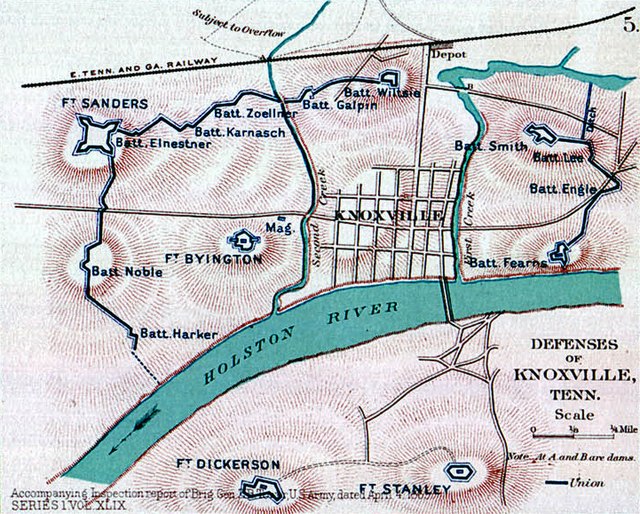
From May 5 to May 7, 1864, the Army of Northern Virginia, commanded by Robert E. Lee, battled with the Army of the Potomac, commanded by Ulysses S. Grant. In what was known as the Battle of the Wilderness. The terrain was horrific for a battle – hundreds of acres of dense scrub, trees, and thick woods. Dry conditions, not to mention shelling by artillery, were conducive for fires. It was also notable for being the first engagement between the two commanding generals.
With only a day passing, the two armies moved from the Wilderness area to the region around Spotsylvania Court House and soon found themselves engaged again. Except this time, it was more of a push-me / pull-you series of engagements, with the Confederate lines generally holding (with one major exception) and with continuous punching of those lines by Union forces. Instead of three days, the action went on for two weeks, from May 8 to May 21.
Chris Mackowski and Kristopher White detail the action day by day in A Season of Slaughter: The Battle of Spotsylvania Court House, May 8-21, 1864. And they do more. Each chapter (general covering each day) includes directions on how to visit the various battle and engagement sites and explaining what visitors today would see that the actual participants would not have (or vice versa). The book serves as both an essential day-by-day history of the battle and a field guidebook (with photographs). Also included are numerous photographs of many of the officers, generals, and soldiers involved in the battle.

The book is not written for expert or academic readers but for the general reader who might be interested in the battle, the Civil War, and American history. And for those interested in touring the battlefields. For that general reader, it is an excellent and helpful resource.
A professor at St. Bonaventure University, Mackowski has B.A., M.A., M.F.A., and Ph.D. degrees in communication, English, and creative writing. The author of some nine books, he’s written extensively on the Civil War for a number of publications. He also worked for the National Park Service and gave tours of the Civil War battlefields at Fredericksburg, Chancellorsville, Wilderness, and Spotsylvania. He serves as editor at Emerging Civil War.
White is the deputy director of education at the American Battlefield Trust. He received a B.A. degree in history from the California University of Pennsylvania and an M.A. degree in military history from Norwich University. For five years, he served as a ranger-historian at the Fredericksburg and Spotsylvania National Military Park. He is also a co-founder and chief historian for Emerging Civil War, and has published, co-authored, and edited nearly 24 books.
A Season of Slaughter stresses the importance of the month of May. The two commanding generals were not only testing their armies but also each other, each gaining the measure of what he was dealing with. It was also the month when the strategy of the overall Union army changed, a change driven by Grant: the goal became not the capture of Richmond, the Confederate capital, but the destruction of Lee’s army. If Grant had to do that by wearing down the Confederates, Grant would do that, even at the cost of horrific loss of Union soldiers.
Top illustration: Battle of Spotsylvania by Thure de Thulstrop.











